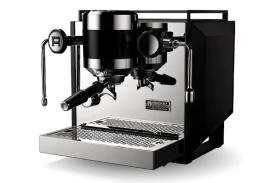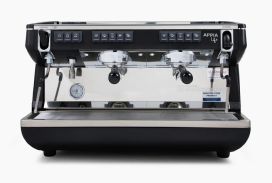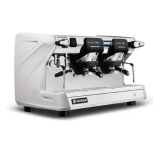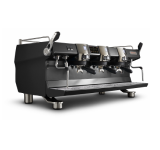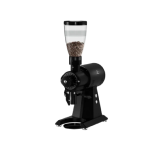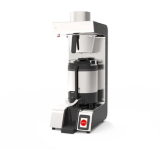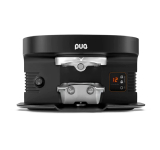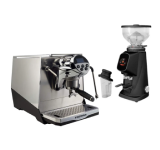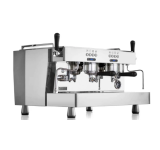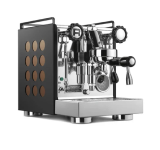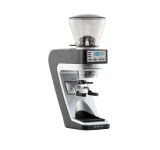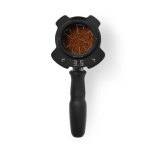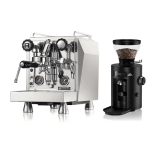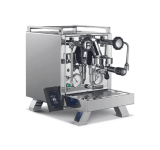Scientifically speaking, there is only one drink that humans need to sustain life, and that is water. Realistically speaking, humans require another beverage to live life, and that is everyone’s favorite cup of coffee.
In the US alone, 66% of Americans reported drinking coffee everyday. That equates to over 220 million Americans enjoying a cuppa joe each morning.
The sheer number of citizens the US has, makes it primed as the largest coffee consumer by volume yet when broken down, Americans may not be consuming as much coffee as it seems. In terms of amount of coffee consumed per person, the US isn’t even a top ten consumer at roughly 4 kg of coffee per person annually. Small European nations like Finland, Norway, Iceland and Denmark pave the way as these nations consume over 9kg. Such differences may be due to the wide range of beverages when one describes coffee and the social-cultural events that take place around a cup of coffee.
Global Coffee Consumption
Almost nothing comes close to the volume of coffee consumed per year, over 10 Billion (yes, that’s with a B) kilograms of coffee are consumed worldwide annually. From here, coffee is prepared in a multitude of ways with each country having a preference for one preparation method over another. Each year, new ways to prepare and consume coffee-based beverages emerge leading to new trends and further sparking a new generation of coffee-consumers.
Countries with the Highest Coffee Consumption Per Capita
Some countries seem to run on coffee. Be it for the buzz of caffeine, the pleasure of taking that sip of liquid gold, or just taking some time to slow down during a busy day to enjoy some company over a cup of joe, everyone has their own reason for why they enjoy this beverage.
The following countries consume the most amount of coffee per person each year:
1. Finland (12 kg of coffee per person annually)
Finnish Coffee culture revolves around a practice known as “kahvitauko” which is the equivalent of a coffee break. While certainly a great excuse to enjoy coffee, this tradition is associated with taking a quick break within a busy day to relax and unwind, and to spend some time socializing with those around us.
2. Sweden (~10kg)
Swedish culture has their own version of a coffee break deeply embedded in their rich history and it is known as “Fika”. This is primarily a social event done in the afternoon and comes with a light snack.
3. Norway (9.9kg)
Norway has been enjoying coffee since the early 19th century. Norwegians probably know best when it comes to simple coffee preparation methods as they have a method called “kokekaffe” which involves boiling water in a kettle, adding ground coffee and letting it steep for 4 minutes. Something very similar to the industry standard known as cupping.
4. Denmark (8.7kg)
The Danish have a term called “hygge”, which roughly translates to a nostalgic mood of comfort which embodies a feeling of warmth, and the cafes in this country are designed around this idea. Coffee is so prevalent in their culture that words have been built around coffee. These include “Kaffeepause” which means coffee break, and “Kaffeslabberas” which means to share coffee with another.
5. Switzerland (7.9kg)
Sharing a border with Germany, France, and Italy, Switzerland has long been a hub for meetings of people from all around. As far back as the 17th century, the go-to place for such meetings are coffee shops. Given the variety of backgrounds of people going into such coffee shops, the Swiss enjoy a wide variety of coffee preparation methods from a straight espresso, to a coffee cocktail.
6. Belgium (6.8kg)
A standard breakfast in Belgium isn’t complete without a cup of coffee, and it is so essential that they have created a word to describe the pastries that accompany their coffee during breakfast, called “koffiekoeken”. This directly translates to coffee pastries.
7. Luxembourg (6.5kg)
Luxembourg is just like other European countries in their love for coffee. They enjoy both brewed coffee and espresso. The country is home to numerous Italian expats which may lend itself to the popularity of espresso here.
8. Netherlands (6.2kg)
The Dutch enjoy coffee all across the spectrum, from traditional methods to specialty coffee. It is enjoyed throughout different times of the day much like other nations, but often with their delicious national delicacy, the stroopwafel.
9. Canada (6.1kg)
Unlike other countries, Canada enjoys coffee mostly during breakfast in the comforts of their home. Only recently has the consumption of coffee outside of their homes become popular, no doubt due to the popularity of everyone's favorite Canadian icon, the mighty Tim Hortons.
10. Germany (5.7kg)
German coffee culture has a word known as “Kaffeeklatsch”, and this translates to coffee chat, where family and friends gather around for everyone’s favorite 3 Cs. Coffee, Conversations, Cake.
Regional Variations in Coffee Drinking Habits
Odds are, if you ask for a standard cup of coffee in 10 countries, you’ll be getting 10 cups all prepared a different way. A cup of coffee can range from a shot of espresso, brewed coffee, to a frappuccino with blended whip cream and an ungodly amount of sugar and sweeteners.
Even the classic combination of espresso with frothed milk can produce a permutation of beverages. The Australian favorite’ flat white, Italian cappuccino, and American latte all differ in ratios and milk froth but are made up of the same ingredients. Meanwhile, in much of Asia, perhaps owing to some degree of lactose intolerance and a prevalent history of drinking tea, a large percent of the population enjoys brewed coffee, or a variation of espresso-beverages without milk. In Korea, iced americanos are extremely popular even during their winters.
Along with this are the different drinking habits each country has. While most enjoy a coffee to start their day, some countries are more liberal with having multiple coffees throughout the day. Others meanwhile enjoy just having one cup after lunch. Italians are quite known for not having any milk in their coffee beyond 11am.
Demographic Patterns in Coffee Consumption
Analysis of Age Groups and Their Coffee Drinking Habits
While coffee is almost universally popular, not everyone enjoys it the same way. Consumption habits differ in terms of frequency and preparation method enjoyed.
In the US for instance, half of all 18-24 year olds drank the beverage, while with seniors, over 70% enjoyed the drink. Seniors not only drink the beverage, they also drink almost three times as much as their younger counterparts. What we do not know is what the preparation method of the coffee they enjoyed was.
Gender Differences in Coffee Consumption
In a study conducted by Food and Nutrition Sciences, it found that over half of men consume coffee, while only about one-third of women do. Further, Among the individuals who consume coffee, males consume half a cup more than females do, at about 2.4 cups a day.
When individuals who don't drink coffee were asked why, females mentioned disliking the bitter taste of most coffee. For males, recurring costs were the cited cause. Coinciding with these findings is research done by Tokai Women’s Junior College, which found that women preferred sweeter coffee than their male counterparts, while men preferred stronger, less sweet tasting coffee.
Socioeconomic Factors Influencing Coffee Consumption
While coffee may seem like a straightforward beverage the same way a glass of water is, it often reflects deeper and hidden considerations about one’s socioeconomic status. In a research conducted by medical students from the King Faisal University of Saudi Arabia, 923 young adults between the ages of 16-40 were interviewed regarding their motivation, frequency and possible adverse effects such as withdrawal symptoms when it comes to consuming coffee.
The findings of this research showed that their respondents often had poor sleep patterns of 3-5 hours a night and that the popularity of the beverage was due to its caffeinating effects related to increased energy levels and functioning. They found that drip coffee was still the most popular method, and that frequency of intake was 2-3 times per day.
Last but not least, adverse effects found were related to restlessness, difficulty sleeping, tachycardia and withdrawal symptoms such as headaches and tiredness. The motivations behind the intake of caffeine likely differ between age groups but it may not be a stretch to say that young, working adults have different, possibly less healthy reasons than their senior counterparts.
Trends in Coffee Drinking Habits
Coffee has been around since the 15th century. With its enduring presence, the definition of what a standard cup of coffee is has evolved as well. Just like with any other trend, the popularity of coffee methods such as espresso, americano, brewed coffee, cold brew and infusion brews are always changing.
A recent survey found that 33% of US coffee consumers said that a drip coffee maker was their most recent method of enjoying coffee. This is a decline compared to 46% from 10 years ago. Such changes in popularity may be attributed to the rise of single-cup brewers like the Hario V60, Orea dripper, Kalita Flat bottom, as well as the accessibility of new methods such as manual espresso makers, Moka Pots and the Aeropress.
Additionally, a US study from 2022 found that 38% of coffee drinkers prefer unsweetened drinks. This preference may give rise to an appreciation of the actual brew itself rather than additional sweeteners. According to the US National Coffee Association, more younger adults in the age groups of 25-39 seem to be drinking coffee. Alongside these, the rise of specialty coffee, and emphasis on single-origin beans give a new appreciation for the beans used to brew their favorite beverage.
While research is limited when it comes to specialty vs commodity coffee consumption, the rise of specialty coffee in the past decade, most especially since the Covid-19 pandemic has seemed to only increase the popularity of coffee across all ages.
Impact of Changing Lifestyles on Coffee Habits
Humans are habitual beings, we take time to learn and develop habits, and take even longer to get rid of them. This is good when habits are beneficial to our health and lives, but detrimental when bad habits such as vices develop. For most of the world, coffee is a habit. It is something partaken in, during routine moments of one’s life. For most of us, that is breakfast, where a breakfast without coffee is incomplete. While for some, an afternoon without coffee is just not right.
Intentionality has become somewhat of a buzz word in recent years. Humans tend to develop habits through their routine and unconscious efforts. Intentionality tries to counter this. Intentionality requires you to question what you’re doing, why you’re doing it and whether it is actually something you want to do. Coffee consumption and intentionality seem to always find one another.
As consumers become more intentional about the products they purchase, consume and in some way, support, specialty coffee has placed itself right along their path. While commodity coffee has mostly been about just consuming a beverage that is something as routine as eating a meal, specialty coffee emphasizes quality, traceability, sustainability and “the right way” of farming. Consumers have the potential to be intentional about where they put their hard earned money into. Whether into that dollar cup of coffee from who knows where, or that 4 dollar cup of specialty coffee, that has the potential to be so much more flavorful and where the dollars go into supporting not only a small business, but also pays farmers and producers a living wage.
Coffee Consumption in Different Settings
According to driveresearch, 68% of Americans make coffee at home daily.
Yet interestingly, in a separate study by GB TGI, 61% of the respondents said they’ve visited a coffee shop in the past 12 months. This study also found that 42% of respondents who visited a coffee shop also have a coffee maker at home. This would make sense as coffee consumers enjoy cups of coffee throughout the day, a cost-effective way would be to have the first cup of coffee made at home alongside breakfast followed by an afternoon pick-me-up cup from your favorite local coffee shop.
Everyone’s gone through that post-lunch break slump where suddenly nothing seems nicer than to head home and fall asleep. As much as we wish we could do that, we’d probably not have a job to go back to afterwards.
Instead, we cling onto our coffee to give us that final boost to get through the final hours of that 9-5. According to a 2011 survey by Alterra Coffee Roasters, it found that 65% of office workers drink coffee, with 38% saying they couldn't’ get through the day without a cup of joe. They also found that 30% reported improved focus and productivity thanks to this cup of coffee. To say coffee is essential to an office is an understatement. While coffee shops are likely accessible from your office, some do prefer to save a few bucks, which do add up over a year, and either bring their own coffee in a tumbler, or to make some coffee over at their office pantry.
More and more offices are investing in a quality coffee setup for their needs. Some offices stick to super automatics for a no-frills approach yet others choose a no-compromise approach with a semi-automatic machine and electric burr grinder that definitely rivals your local coffee shop. Such investments definitely pay off in light of the research by Alterra coffee roasters.
Rise of Remote Work and Its Influence on Coffee Consumption Patterns
As much of the world was locked down and closed during the early days of the pandemic, more and more households decided to invest in ways to craft their favorite cup of coffee from their own homes.
This meant investing in quality equipment, from coffee grinders to espresso machines, pour over brewers, batch brewers and most importantly, the beans. This substantial investment in home equipment has meant more and more individuals are making coffee at home, and even more importantly, the quality of coffee at home can rival and even exceed those produced by their local coffee shops.
Research by the Vending Times found that 32% of remote workers upgraded their coffee machines during this pandemic period. While there was an increased interest in homebrewing, 40% still enjoy going out for their cup of coffee despite having a setup at home. For most, it is a break from their daily work routine, and allows them to go for a short walk and enjoy some sunshine headed to their favorite coffee spot.
How is the Coffee Industry Reacting to Consumer Needs?
As sales plummeted to near zero during the pandemic, coffee shops and equipment manufacturers found ways to reinvent themselves. For coffee shops which may have relied on steady foot traffic from office goers, most decided to sell beverages as ready-to-drink (RTD), some decided to sell the beans they used in about 250g bags, perfect for a week or two worth of coffee in a home setting, and lastly, businesses expanded their delivery options through the use of third-party apps.
For manufacturers meanwhile, the growth in demand for home equipment has led to a new definition of what equipment for home-use meant. Prior to the pandemic, most home coffee equipment was not as well built as their commercial counterparts and you didn’t have a lot of options to choose from. Nowadays, the selection for home equipment covers everything from A-Z, whatever your needs may be. There are now different price segments for these types of equipment, from entry-level, intermediate, to high-end, with the best of the best being dubbed as prosumer level.
In 2024, it is now easier than ever to find an endless selection of machines, grinders, tools and beans whatever your budget may be, and most importantly, easier and more cost-effective than ever to be able to achieve that perfect cup of espresso.
Health and Wellness Aspects of Coffee Drinking
Coffee, primarily drunk for its caffeine, is actually a drug. Not only is it a drug, it is the most accessible and widely consumed drug in the world and just like anything else, has both positive and negative effects on our bodies.
Let’s start with the good; coffee is a rich source of antioxidants, and has been found to improve cognitive function and decrease the risk for a plethora of diseases such as: certain cancers, cardiovascular disease, and Type 2 Diabetes.
An important distinction is that only the right amount of coffee is good for you, just like with anything else, too much of a good thing isn’t always a good thing. A standard 8oz cup of coffee contains about 100mg of caffeine, and the dietary guidelines for Americans state about 400mg of caffeine a day should be the upper limit of daily intake.
Now for the not-so-good part, coffee can produce some negative effects on our body as well. Probably its best trait and possibly worst, caffeine gives us an energy boost. The problem is, this energy boost can last long after we’ve needed said boost. Caffeine can impact one’s sleeping schedule and habits leading to an inability to sleep, headaches, anxiety, and restlessness. This is why most people like to cut-off caffeine by mid-day, to give it enough time to metabolize in our body and have much of it gone from our system by the time one is about to sleep.
The half-life of caffeine is roughly 5 hours. This means that after 10 hours, a quarter of the initial intake of caffeine is still in your body. So maybe reconsider that cup of coffee at 5pm next time.
Of course, it is important to take note that everyone’s body reacts differently to caffeine as with any other drug, and it is important to monitor how it affects you yourself, and adjust the timing and dosage of caffeine you take in based on what works best for you.
Predictions for Future Changes in Global Coffee Drinking Habits
Perhaps a cliche saying, but definitely true, the only constant in this world is change. Through the past centuries, be it the pandemic, world wars, economic collapses and numerous other global events, a constant among them is the popularity of coffee.
Recent decades have placed greater emphasis on the appreciation of coffee as a beverage and a craft, rather than just a drink that gives you a boost of energy. This greater emphasis has allowed more and more people to enjoy the beverage in a variety of ways and a variety of contexts.
No longer just a chemical boost, it is now a social tool, one to be shared with meaningful people. It is also an act of expression, as the individual chooses the beverage most fit to not only their tastes, but also to their lifestyle. Something black and straightforward? brewed coffee. Something filling and creamy? a milk-based latte. On-the-go and something that packs a punch? An espresso. Something playful and sweet? A Frappucino.
Coffee is best enjoyed the way you like it, no matter what other people think.
As more people enjoy this beverage, and new ways to prepare it are invented, manufacturers and producers also find new ways to reach their target audience. Never before has such high quality equipment for brewing been available for such a great bargain, and never before has coffee farming methods and processes been so advanced as the time we live in now.
Every year, new coffee science research is conducted getting everyone closer to that perfect cup of coffee we all so love. So cheers to this wonderful product of chemicals, love and passion.
Cheers to coffee.
Summary
If it isn’t clear already, coffee means a lot of different things to a lot of different people. These differences can sometimes be due to individual differences, but a lot of it also has to do with your background and context. Where do you come from? How do you enjoy coffee? Is coffee a social stimulant for you or is it just something you partake in to get you through that daily grind?
Feel free to share your thoughts below and if you see a comment that stood out to you, please reply as well! Go start a conversation about coffee, just like how it’s been done for centuries.
Citations:
- International Coffee Organization (ICO) – Provides comprehensive data and reports on global coffee consumption, including top coffee-drinking countries. [Source: https://www.ico.org/]
- Euromonitor International – Provides market research and analysis on global coffee consumption, including data on the top coffee-drinking countries. [Source: https://www.euromonitor.com/]
- National Coffee Association (NCA) – Offers valuable insights and data on coffee consumption patterns and trends, including information on top coffee-drinking countries. [Source: https://www.ncausa.org/]
- International Trade Centre (ITC) – Provides trade statistics and analysis on coffee consumption by country, including rankings of top coffee-drinking nations. [Source: https://www.intracen.org/]
- Specialty Coffee Association (SCA) – Provides insights and research on specialty coffee consumption, including data on countries with high coffee consumption. [Source: https://sca.coffee/]
